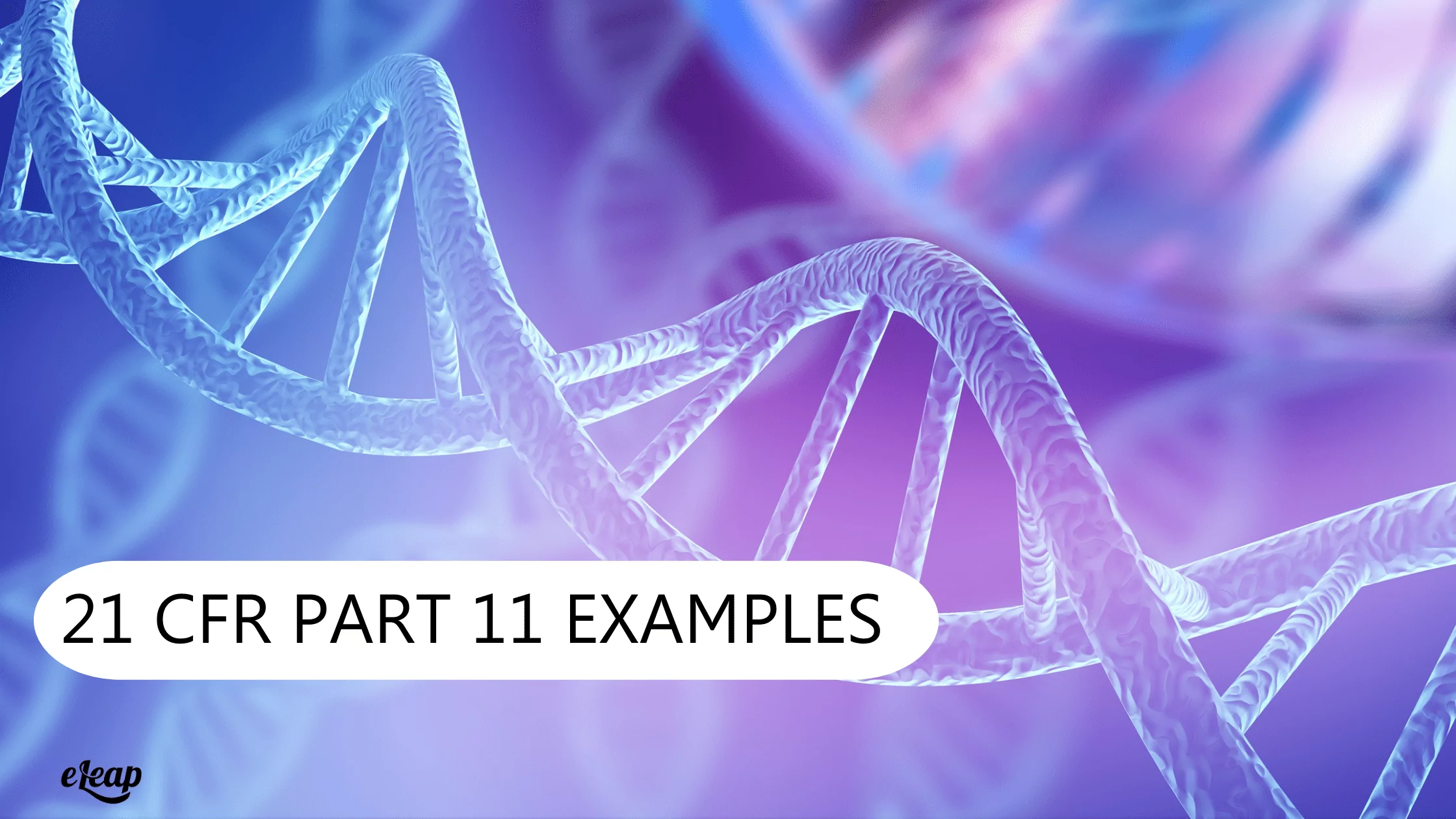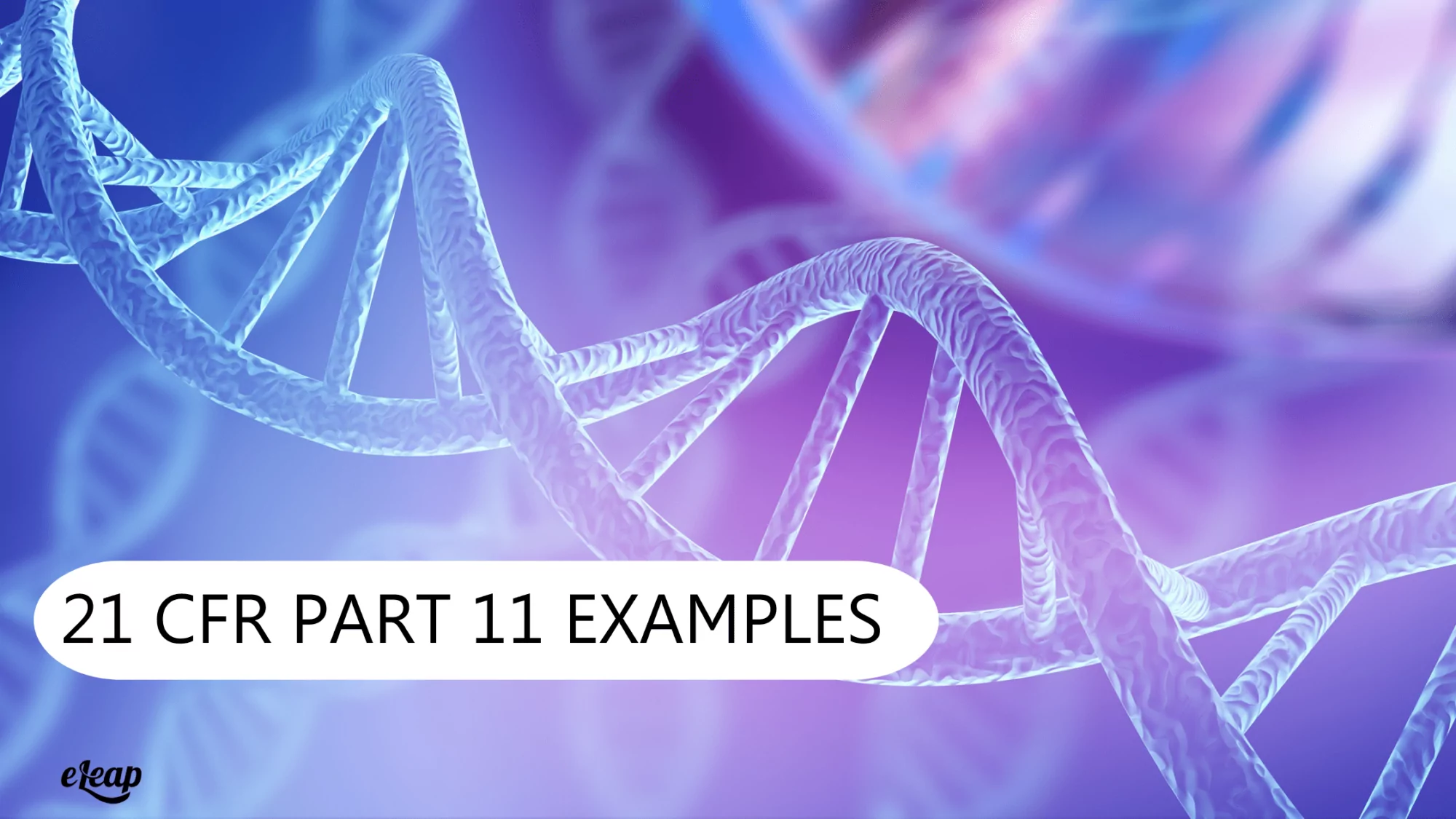21 CFR Part 11 Examples
Breaking Down the FDA’s Rules for Better Understanding

The digital revolution has been nothing short of remarkable. It has ushered in new ways of living and working, and completely changed how we deal with data. Today, we’re more productive than ever, able to access information in seconds, to compare notes with others from a world away, and so much more. When it comes to the FDA’s regulations, there is a long list of 21 CFR Part 11 examples of companies getting in trouble for not complying with it.

However, that same technology has made it ever more challenging to protect the data that life science businesses need to thrive. Hackers, malicious software, human error – all of these can lead to serious issues, including massive data breaches that leave the personal data of millions of people exposed to nefarious actors, or puts sensitive business data and research in the hands of competitors.
Rules are required to help safeguard that data and prevent unauthorized access to data. The FDA enacted 21 CFR Part 11 to provide rules and guidance that life sciences firms must follow to do just that. However, there has been a significant amount of confusion regarding these rules, even though they were introduced decades ago and have evolved over time along with our data usage habits and technology.
To help clear the air and make sure that you’re on the right path in terms of data protection and security, a few 21 CFR Part 11 examples might be necessary. We’ll explore what you should know below. In the meantime, see how the FDA compliant eLeaP platform can ensure you stay in compliance with Part 11.
What Is 21 CFR Part 11?
CFR stands for Code of Federal Regulations, and the entire code deals with a very wide range of topics. 21 CFR Part 11 is a specific part of that code that deals with how digital records and digital signatures (called “electronic” in the code) are used, stored, accessed, interacted with, copied, and more.
What Is 21 CFR Part 11 About?
At its core, this part of the code is about ensuring companies and organizations develop and implement the right practices. It does this by defining what it takes for electronic signatures and records to be accurate, trustworthy, confidential, trustworthy, reliable, and equivalent to their hardcopy counterparts.
If you look at it in another way, this section of code provides life sciences firms with a roadmap of what’s needed to digitize records and signatures and move them from physical storage to electronic storage, whether that’s on an in-house server or in the cloud.
Some 21 CFR Part 11 Examples
Now that we’ve gotten some of the basics out of the way, it’s time to consider a handful of 21 CFR Part 11 examples and definitions.
What’s an electronic record?
You can think of electronic records as any type of information or document that might be digitized and then stored in an electronic format. For instance, a white paper could be digitized and then stored online. Patient medical history, research and development documents, pharmaceutical research, and so much more fall into this category. The FDA puts it this way: Any combination of text, graphics, data, audio, or pictorial information represented in digital form that is created, modified, archived, retrieved, or distributed by a computer.
What is an electronic signature?
An electronic signature is nothing more than digital information that is used to verify an individual’s identity. It could be an actual digitized version of a handwritten signature, but it could be something much more ephemeral – a username, password, and timestamp, for instance. It could be a password and a physical item that a user must have to log into a system, such as an ID card with a barcode that must be scanned. Or it could be biometric in nature – an iris scan, a fingerprint, or even DNA.
The FDA defines it as:
A compilation of any symbol(s) executed to be the legally binding equivalent of an individual’s handwritten signature.
What is a digital signature?
It might seem strange to have a separate definition of a digital signature from an electronic signature, but it comes down to intended and usage. The FDA defines it as: An electronic signature based upon cryptographic methods of originator authentication, computed by using a set of rules and a set of parameters such that the identity of the signer and the integrity of the data can be verified.
21 CFR Part 11 Examples: How It Applies to Life Science Applications
Given that 21 CFR Part 11 is focused on the protection and regulated access of data within an organization, we can draw some conclusions about how the code applies to life science organizations. However, we should explore some examples to really highlight what your organization needs to do for compliance.
All systems that manage electronic records and processing are required to have specific features. This includes your learning management system and all other similar systems. Some of the features that must be present include clear audit trail functionality, a system to ensure record retention, mandatory file formats, policies on setting and using electronic signatures, and procedures for handling data security and integrity.
You also need standard operating procedures that govern and describe how your organization does things. This is particularly true for your IT infrastructure, and include system maintenance, physical security, logical security, incident and problem management, system change controls, configuration management, disaster recovery, electronic signature policy, and backup/restoration policy. Note that these apply to all electronic systems, including your learning management system, as well as your network as a whole.
Finally, system validation is also critical. Any electronic system that will be used in regulated activities must be fit for its intended use. That includes your learning management system.
eLeaP Can Help
Struggling to find an LMS that fits the bill in terms of capabilities and ease of use, but still complies with 21 CFR Part 11? It can be challenging, but eLeaP’s platform delivers the usability and compliance you need. Contact us today to schedule a custom consultation on your needs.